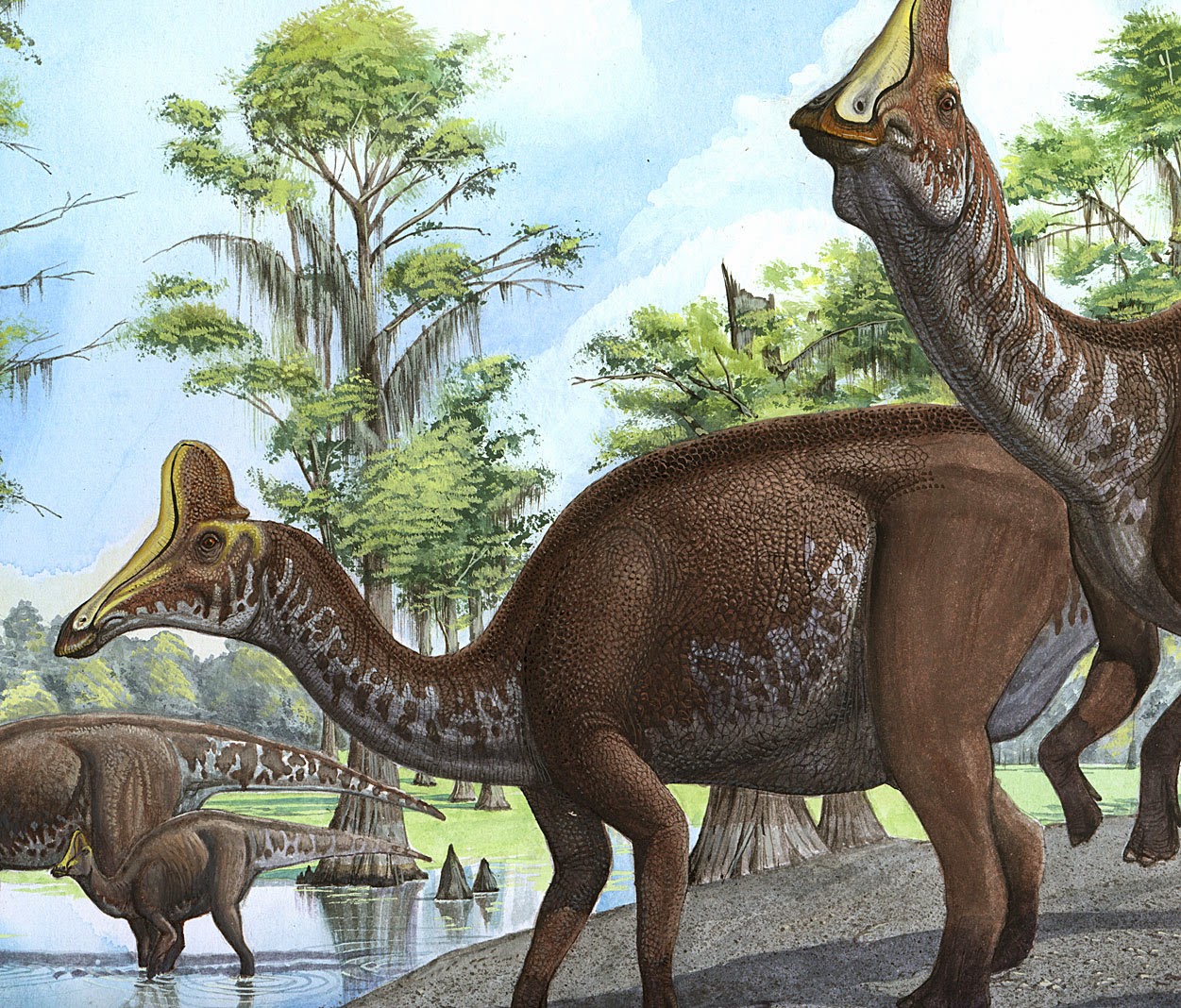
The hadrosaurids, or "duck-billed" dinosaurs,
were large, bipedal dinosaurs, with body
lengths up to fifteen meters, that lived during the
Upper Cretaceous across North and Central
America, South America, Europe, and Asia. It is
thought that they originated in Asia, but once they
arose, they spread and diversified worldwide,
quickly becoming the primary constituent of herbivorous
dinosaur faunas. The first hadrosaur
remains to be found were represented by a few
fragments from Montana and South Dakota, described
by Joseph Leidy in 1856. Shortly afterward,
a partial skeleton was found in New Jersey,
the first nearly complete dinosaur found anywhere,
and described by Leidy in 1858 as Hadrosaurus
foulkii.
Hadrosaurs are ornithopod (bird-footed) dinosaurs,
a term that refers to their three-toed feet.
They are thus part of the Ornithischia, one of the
two major dinosaur subdivisions, and characterized
by a pubis (one of the three bones of the pelvis)
that is inclined backward. In cladistic terms,
they are considered to be a monophyletic group;
that is, they are all derived from a common ancestor.
They are particularly characterized by a toothless
front to the mouth, which is flared outward
to form a broad, flat "bill", prompting early researchers
to dub them the duck-billed dinosaurs.
This bill was covered by a thick,
horny sheath, and the rest of the jaws bore
closely packed batteries of grinding teeth,
up to four hundred on each side of each
jaw. The postcranial anatomy of hadrosaurs
is generally very similar and the really
obvious differences lie in the crests
that many species bear on the top of their
heads. These are formed of outgrowths of
the nasal bones, are frequently hollow,
and are found particularly in the hadrosaurs
known as lambeosaurines.
Hadrosaurid Lifestyle
More is known about the life history of
hadrosaurids than about any other group
of dinosaurs, due to information fromskin
impressions, trackways, and eggs and
nesting sites. They were originally thought
to be amphibious animals, inhabiting
marshy areas and swimming and diving
for soft aquatic plants. This was partly
based on skin impressions from mummified
specimens which appeared to show
webbing between the digits. It was even
suggested that the crested forms used the
crests as snorkels and were able to breathe
through them while underwater. More recent
analyses of stomach contents and the
function of the tooth batteries suggest,
however, that they were adapted to efficiently
process fibrous vegetation of low
nutritional value, such as coniferous needles
and twigs. The crests arenowthought
to have developed for a variety of purposes,
including increased sensory area
for an improved sense of smell, and to act as resonators
for producing distinctive calls.
In 1979, juvenile hadrosaurid bones were discovered
in the Two Medicine Formation in
Montana by Jack Horner. Subsequently, he discovered
nesting sites with eggs that provide evidence
for reproductive strategies in the hadrosaur
Maiasaura. These animals appear to have built
large, circular nesting mounds with concave centers
in common nesting areas. There is evidence of
site fidelity, indicating that the nesting sites were
used from season to season. Up to twenty eggs
were laid in the nest in a circular pattern, then covered
by vegetation that kept the eggs warm as it
decomposed. Bones of young have been found in
some of the nests and these indicate from tooth
wear that the animals had already been feeding on
vegetation. Also, the ends of the bones were still
poorly formed, showing that they were altricial or
nest-bound for some period after they had hatched.
During this period they would have been fed by
adults, which in turn suggests social behavior in
which the eggs were protected by adultswhothen
fed and raised the nest-bound hatchlings.
Hadrosaur Facts
Classification:
Kingdom: Animalia
Subkingdom: Bilateria
Phylum: Chordata
Subphylum: Vertebrata
Class: Reptilia
Order: Ornithischia
Suborder: Ornithopoda (bipedal herbivores)
Geographical location: Western and eastern
North America, central and southern South
America, Europe, Asia
Habitat: Terrestrial habitats
Gestational period: Unknown
Life span: Estimated at twenty-five years
Special anatomy: Large, bipedal dinosaurs in
which the snout was developed into a beak
and a crest was often developed on the head
Other popular Animals
Photo Gallery of - Hadrosaur
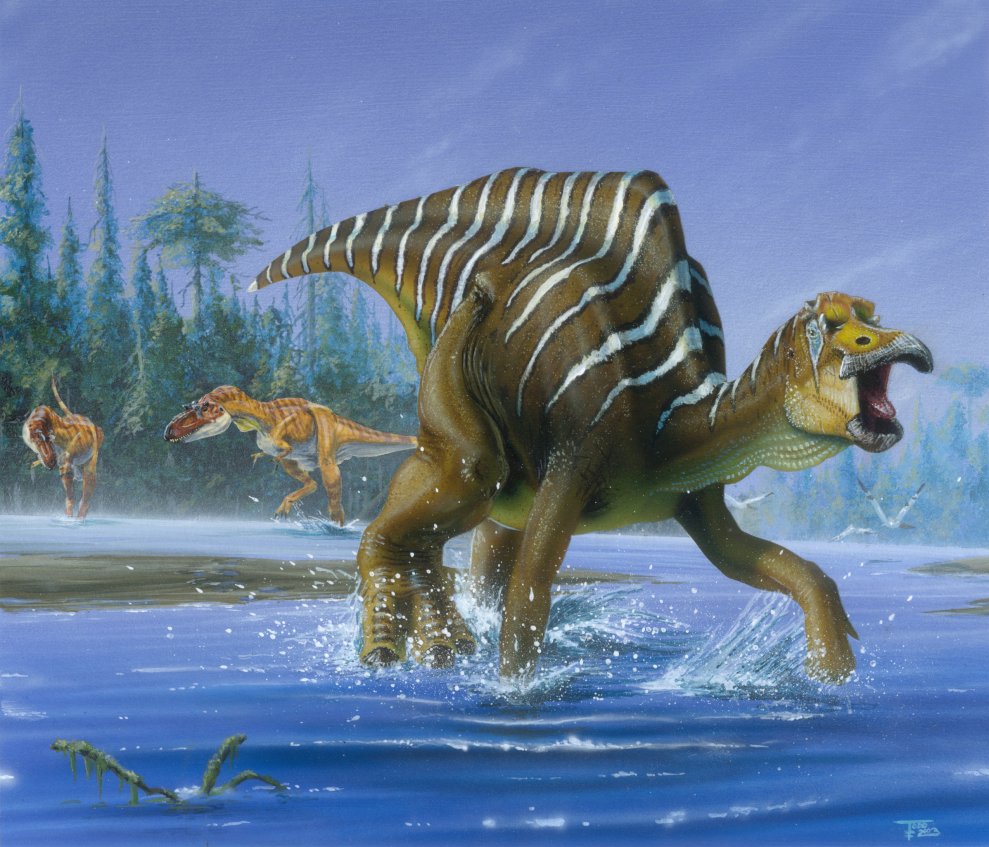



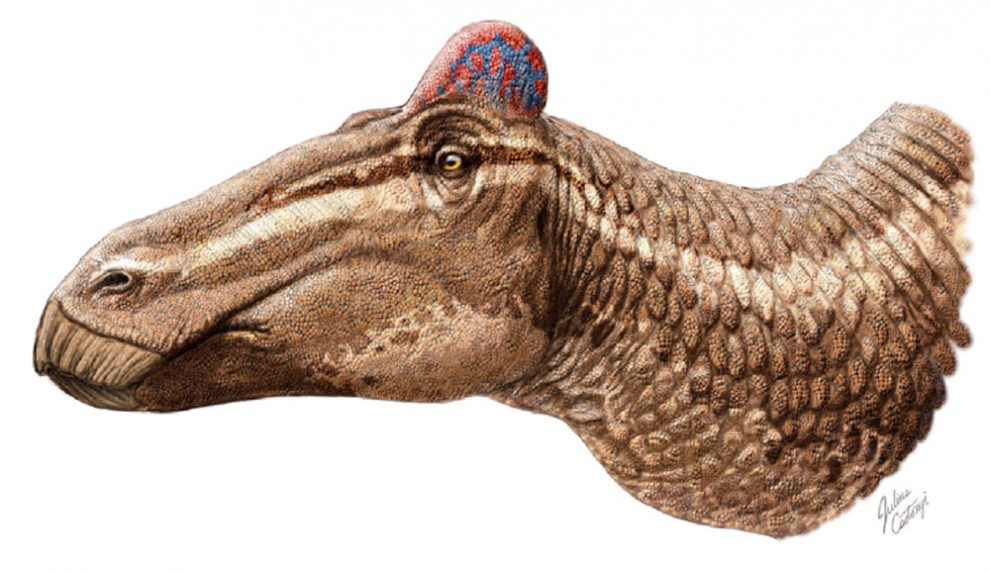

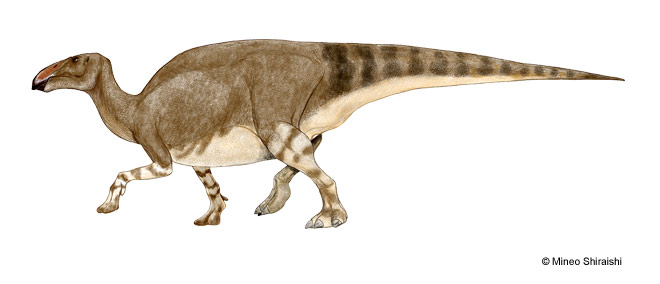
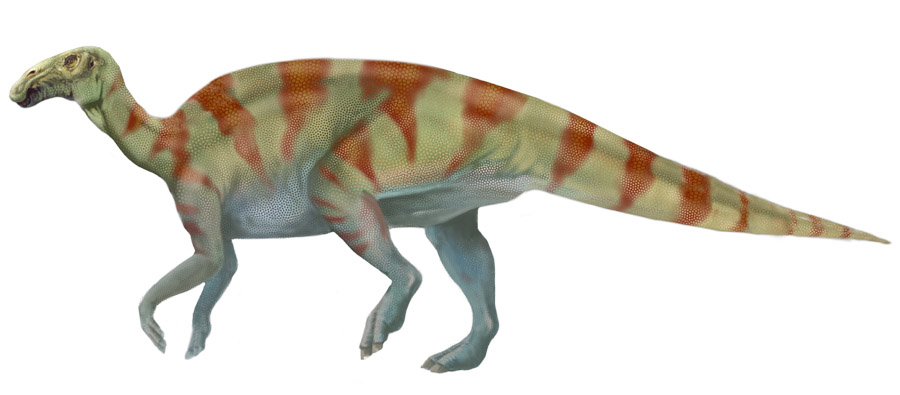
 Animalia Life
Animalia Life